Shopping Cart
Remove All Your shopping cart is currently empty
Your shopping cart is currently empty
Anti-TCTP/TPT1 Antibody (7X932) is a Rabbit antibody targeting TCTP/TPT1. Anti-TCTP/TPT1 Antibody (7X932) can be used in FCM,ICC/IF,IHC,IP,WB.
| Pack Size | Price | USA Warehouse | Global Warehouse | Quantity |
|---|---|---|---|---|
| 50 μL | $298 | 7-10 days | 7-10 days | |
| 100 μL | $496 | 7-10 days | 7-10 days |
| Description | Anti-TCTP/TPT1 Antibody (7X932) is a Rabbit antibody targeting TCTP/TPT1. Anti-TCTP/TPT1 Antibody (7X932) can be used in FCM,ICC/IF,IHC,IP,WB. |
| Ig Type | IgG |
| Clone | 7X932 |
| Reactivity | Human,Mouse,Rat |
| Verified Activity | 1. Western blot analysis of TCTP on different lysates using anti-TCTP antibody at 1/1,000 dilution. Positive control: Lane 1: Mouse placenta tissue, Lane 2: Mouse testis tissue, Lane 3: Hela, Lane 4: A431, Lane 5: MCF-7. 2. Immunohistochemical analysis of paraffin-embedded human colon cancer tissue using anti-TCTP antibody. Counter stained with hematoxylin. 3. Immunohistochemical analysis of paraffin-embedded mouse testis tissue using anti-TCTP antibody. Counter stained with hematoxylin. 4. ICC staining TCTP in A431 cells (green). The nuclear counter stain is DAPI (blue). Cells were fixed in paraformaldehyde, permeabilised with 0.25% Triton X100/PBS. 5. ICC staining TCTP in LOVO cells (green). The nuclear counter stain is DAPI (blue). Cells were fixed in paraformaldehyde, permeabilised with 0.25% Triton X100/PBS. 6. ICC staining TCTP in SH-SY5Y cells (green). The nuclear counter stain is DAPI (blue). Cells were fixed in paraformaldehyde, permeabilised with 0.25% Triton X100/PBS. 7. Flow cytometric analysis of THP-1 cells with TCTP antibody at 1/100 dilution (red) compared with an unlabelled control (cells without incubation with primary antibody; black). Alexa Fluor® 488-conjugated goat anti-rabbit IgG was used as the secondary antibody. 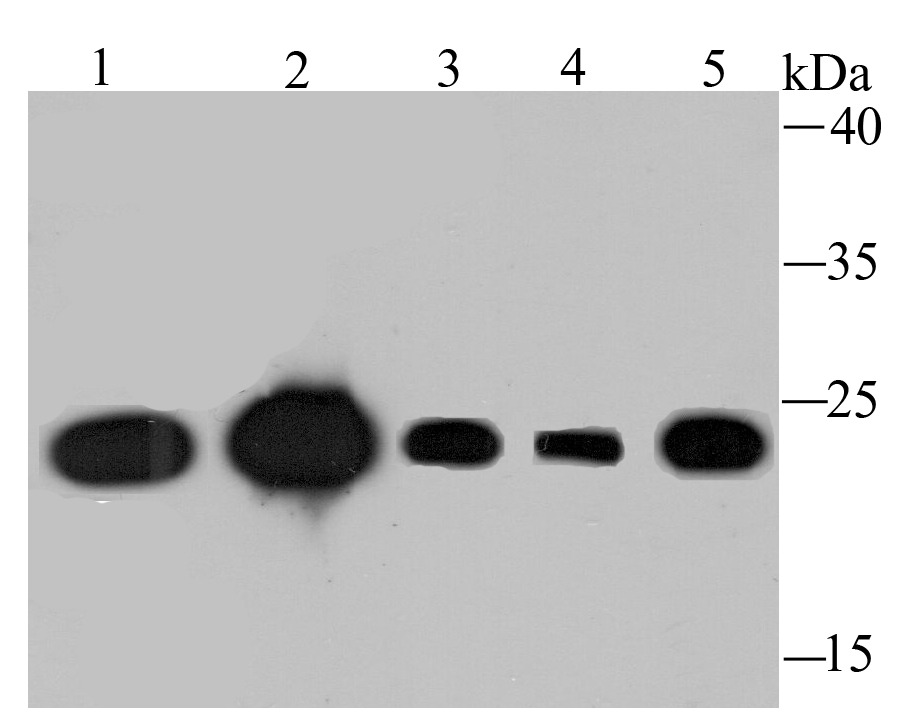 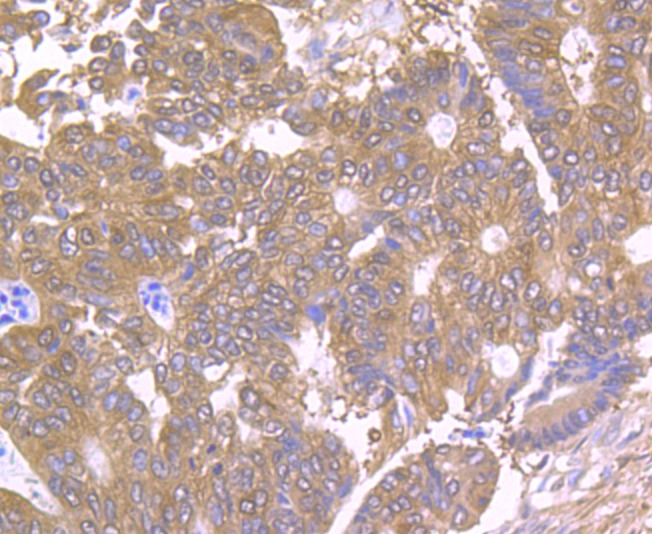 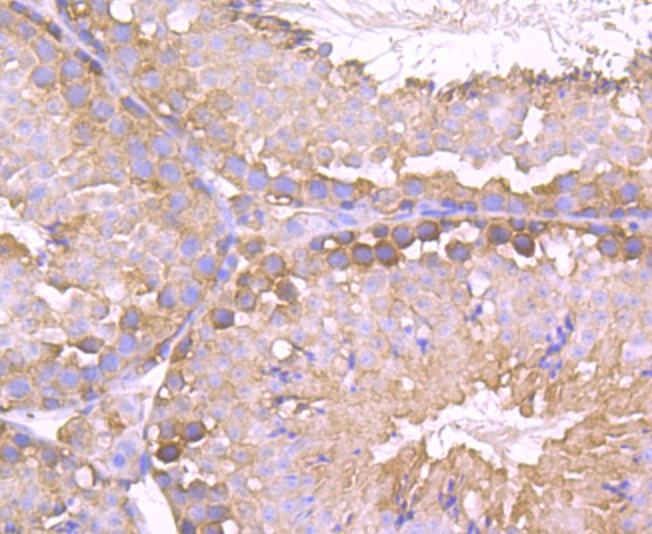  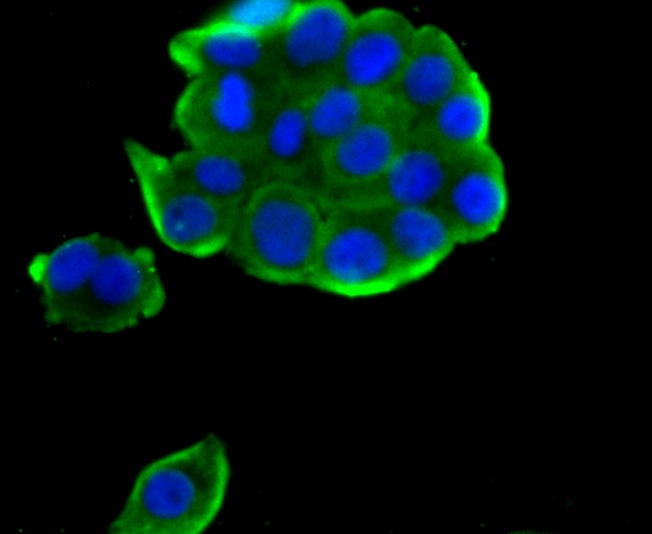 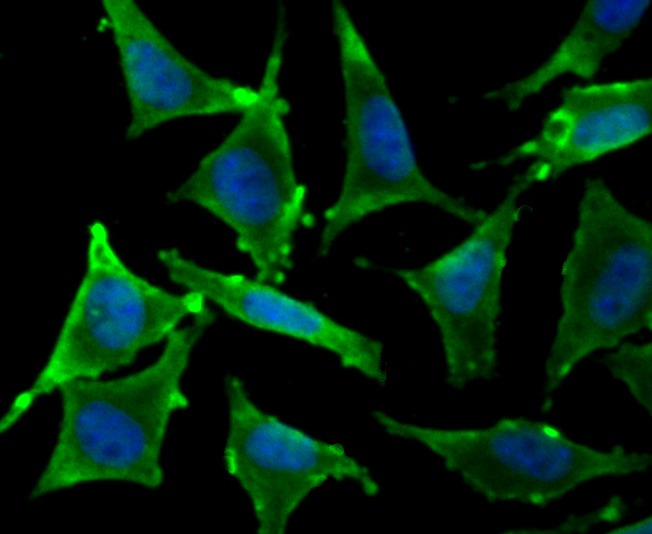 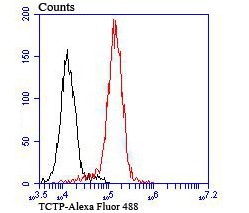 |
| Application | |
| Recommended Dose | WB: 1:500-2000; IHC: 1:50-200; ICC/IF: 1:50-200; FCM: 1:50-100 |
| Antibody Type | Monoclonal |
| Host Species | Rabbit |
| Construction | Recombinant Antibody |
| Purification | ProA affinity purified |
| Appearance | Liquid |
| Formulation | 1*TBS (pH7.4), 1%BSA, 40%Glycerol. Preservative: 0.05% Sodium Azide. |
| Research Background | Histamine-releasing factor (HRF) is a cytokine-like molecule that causes the release of histamine, IL-4 and IL-13 from basophils as well as the secretion of IL-8 and a calcium response in eosinophils. HRF belongs to the translationally controlled tumor protein (TCTP) family. It is expressed in several healthy and tumoral cells, including erythrocytes, hepatocytes, macrophages, platelets, keratinocytes, erythroleukemia cells, gliomas, melanomas, hepatoblastomas and lymphomas, and it is localized in the cytoplasm. HRF plays a pivotal role in allergic diseases, and due to its wide distribution in brain, is thought to be involved in neurodegenerative disorders, such as Alzheimer's disease and Down syndrome. |
| Conjucates | Unconjugated |
| Immunogen | Recombinant Protein |
| Uniprot ID |
| Molecular Weight | Theoretical: 20 kDa. |
| Stability & Storage | Store at -20°C or -80°C for 12 months. Avoid repeated freeze-thaw cycles. |
| Transport | Shipping with blue ice. |
| Size | Quantity | Unit Price | Amount | Operation |
|---|

Copyright © 2015-2025 TargetMol Chemicals Inc. All Rights Reserved.